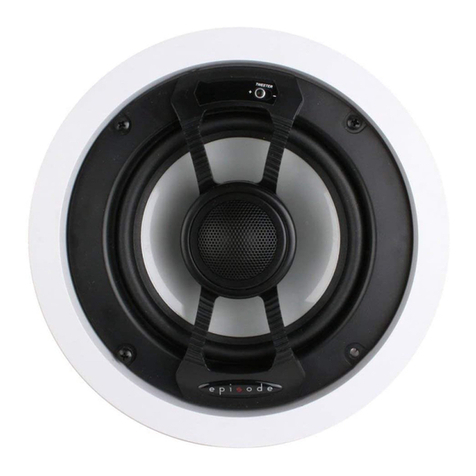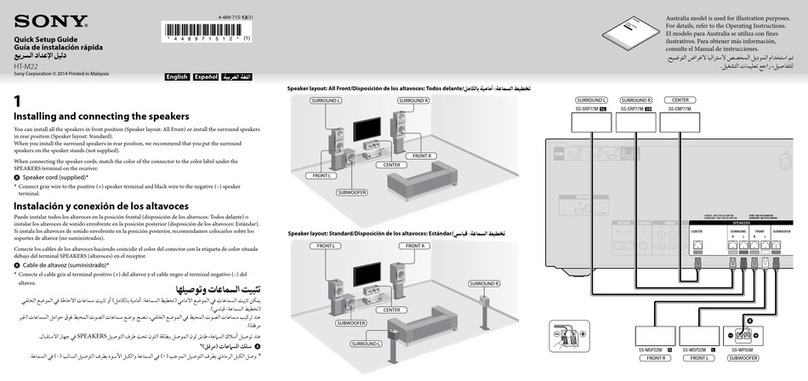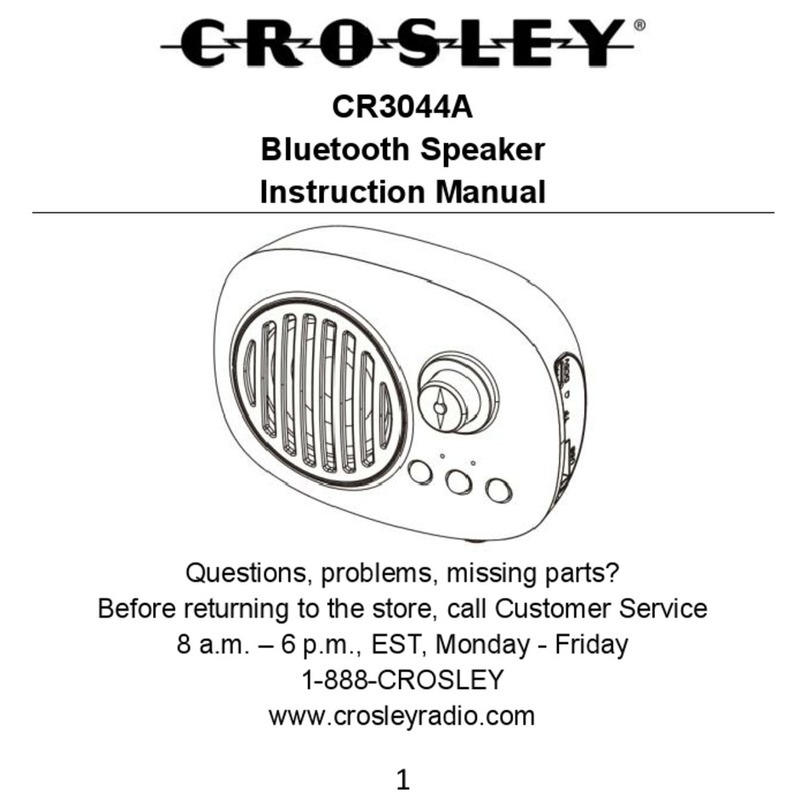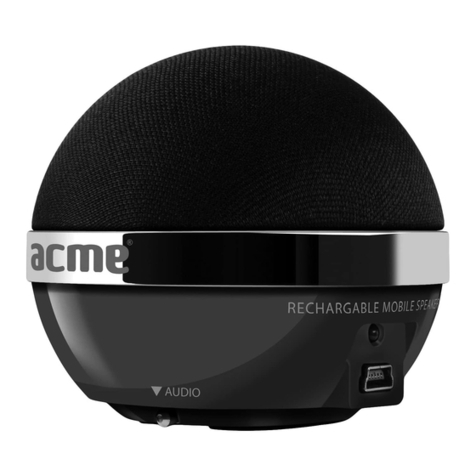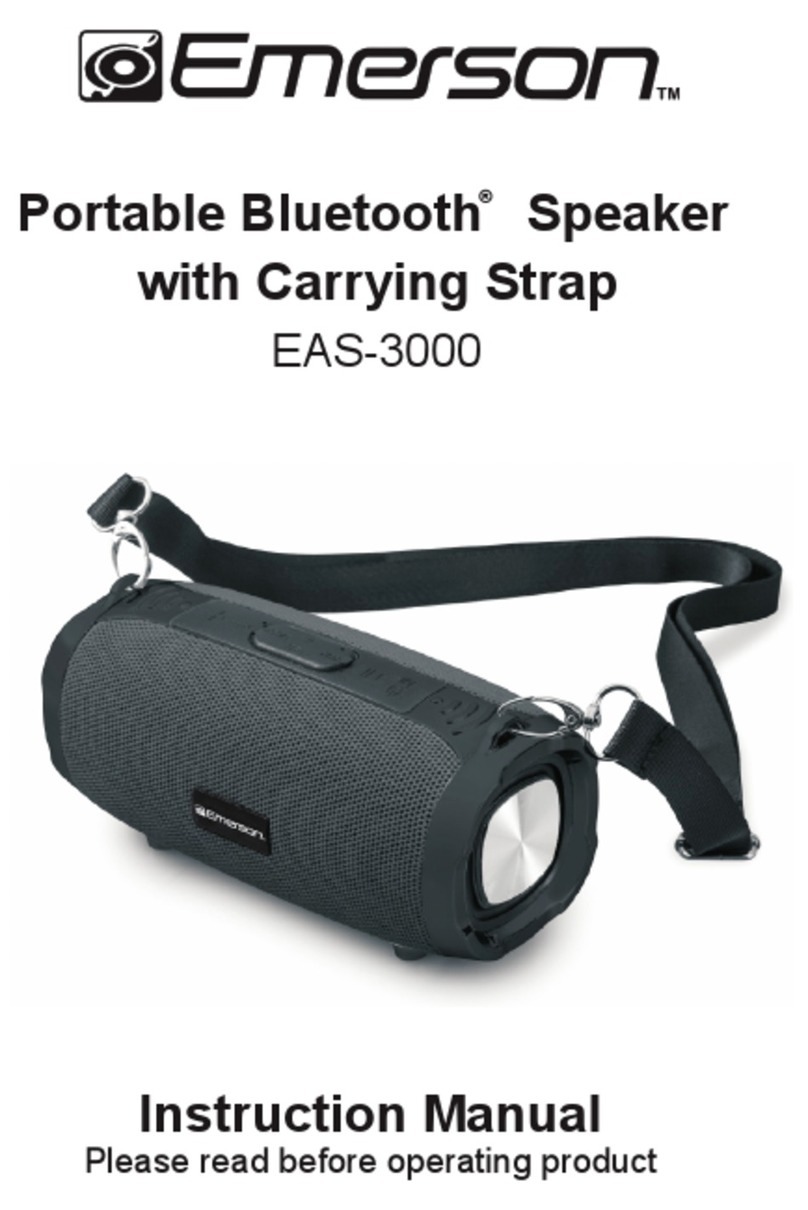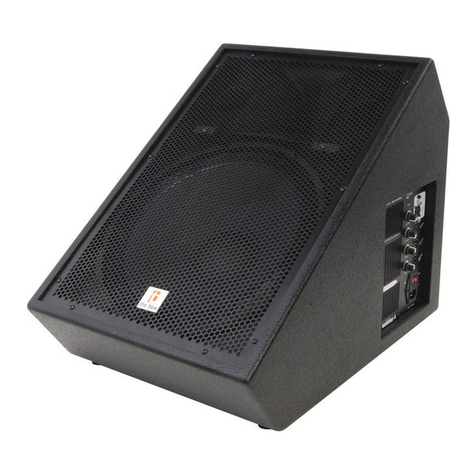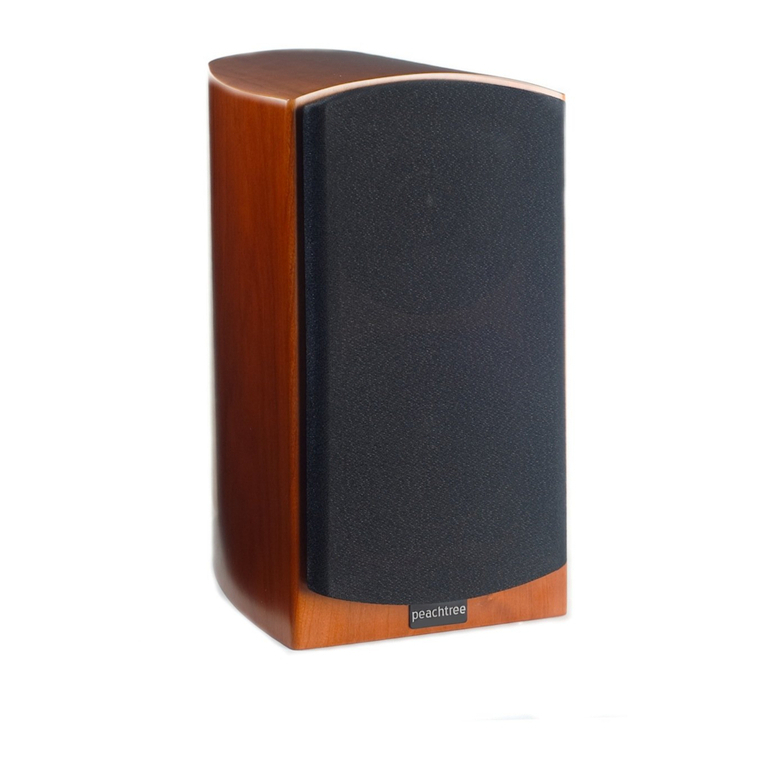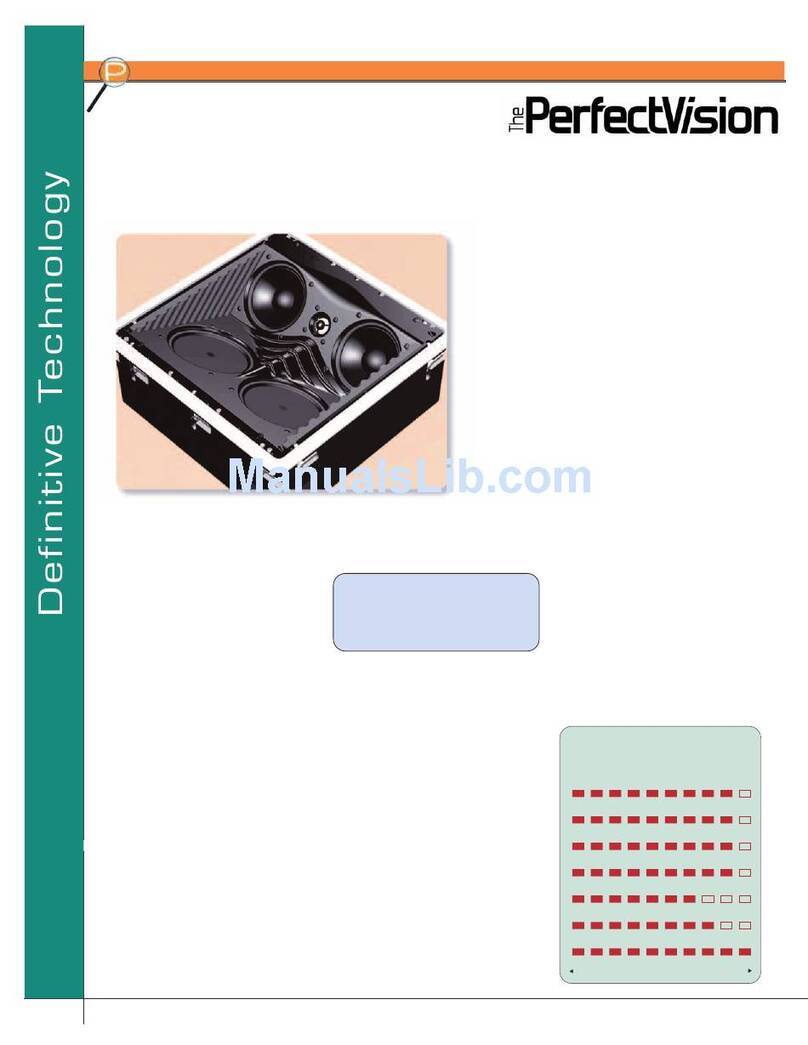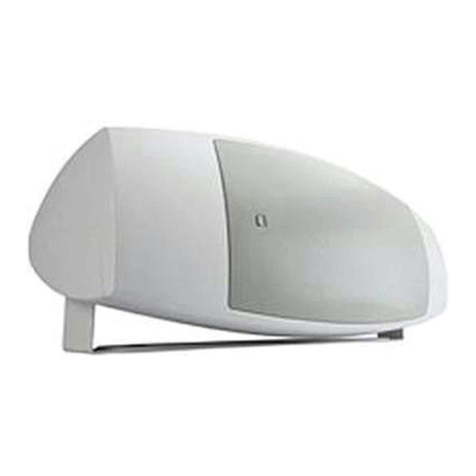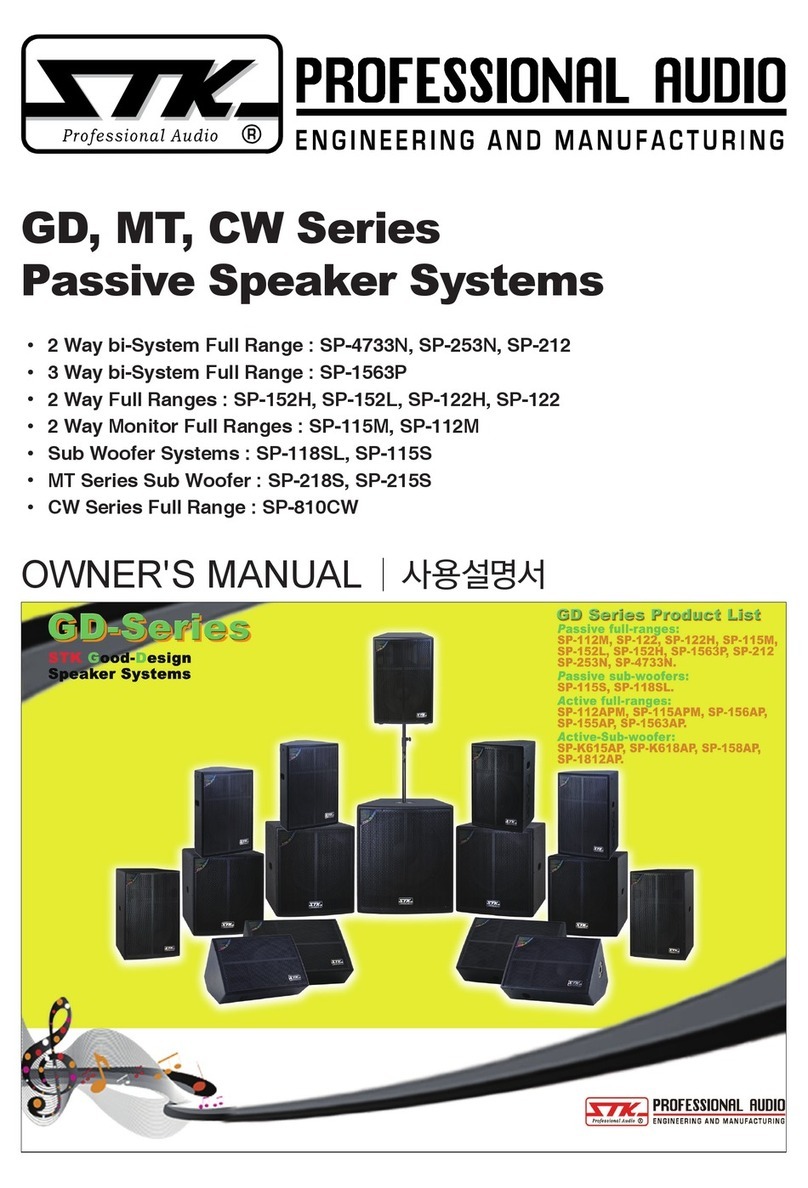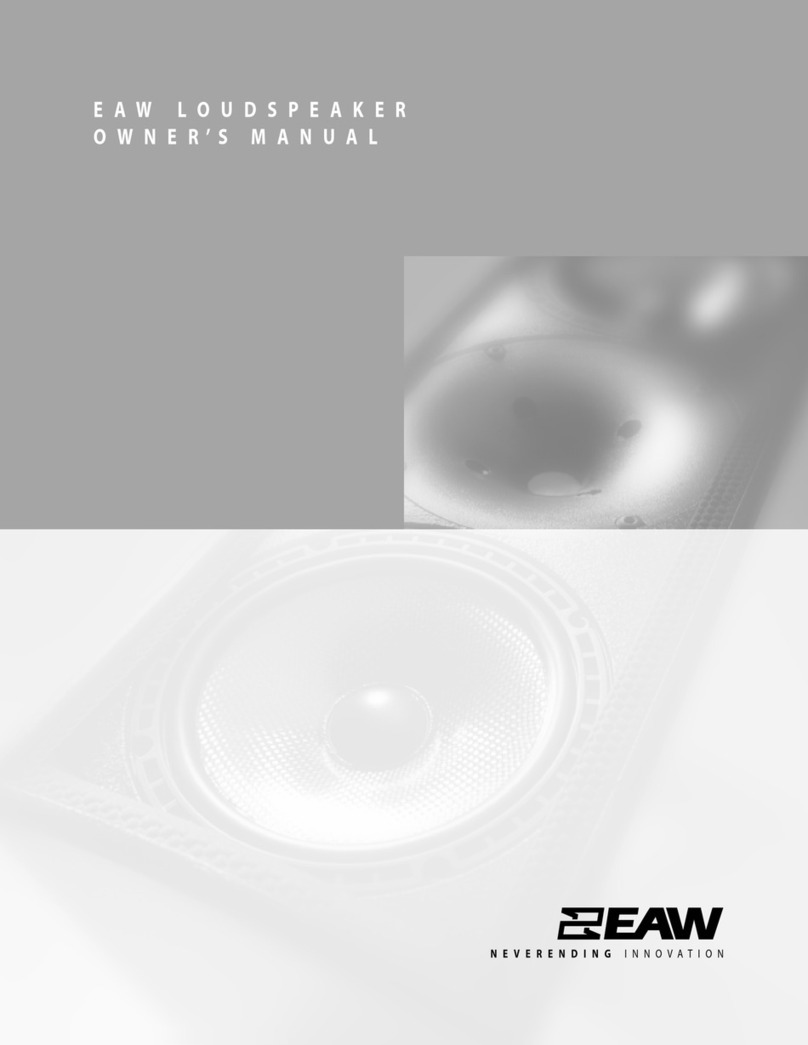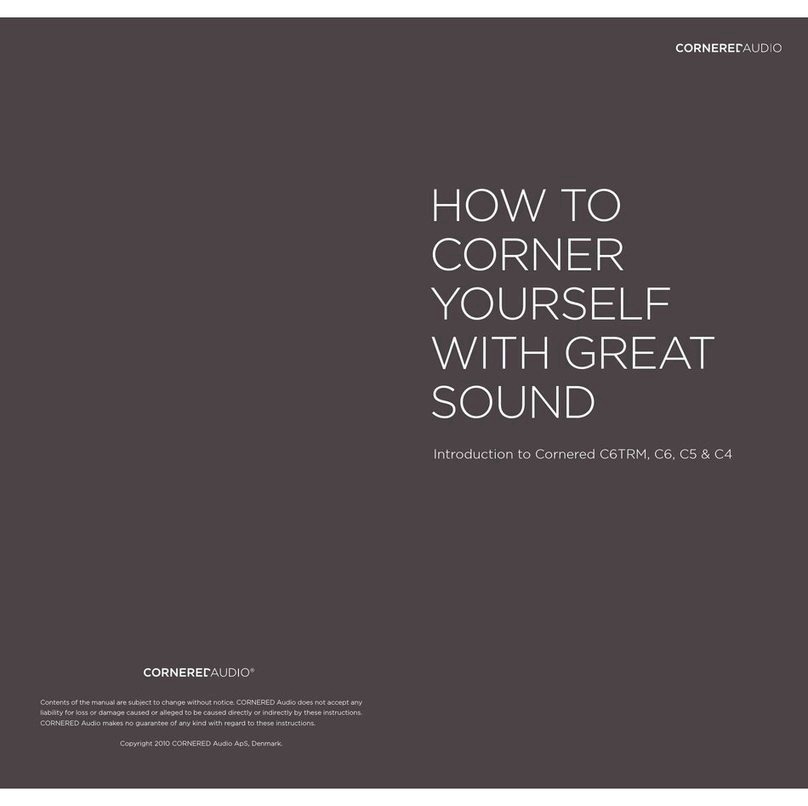Metasound Webcaster User manual

connection
indicator
a
u
d
i
o
l
e
v
e
l
12 VDC
tel.
out
tel.
in
external
music
600Ω
8Ω
URM
master
back-
ground
external
off
on
volume
control
WEBCASTER
plastic_wc.book Page i Wednesday, February 2, 2000 10:32 AM

ii Important safety instructions
Important safety instructions
Before installing or using your WebCaster, read these safety instructions. For your own safety and that of your equip-
ment, always take the following precautions:
❑Read and understand all instructions.
❑Follow any warnings and instructions marked on the product.
❑Keep your WebCaster away from all liquids.
❑Do not plug the WebCaster into a digital telephone line.
SAVE THESE INSTRUCTIONS
WebCaster Data
Record key information about your WebCaster here for future reference.
Serial Number:
Date Installed:
Installed By:
Copyright © 2000 MetaSound Systems, Inc. All Rights Reserved
©2000 MetaSound Systems Inc. No part of this publication may be reproduced, transcribed, stored in a retrieval system, or translated into any language in any form, by any
means, without the written consent of MetaSound Systems, Inc.
plastic_wc.book Page ii Wednesday, February 2, 2000 10:32 AM

Table of Contents iii
TABLE OF CONTENTS
Important safety instructions . . . . . . . . . . . . . . . . . . . . . . . . . . . . . . . . . . . . . . . . . . . . . . . ii
WebCaster Data . . . . . . . . . . . . . . . . . . . . . . . . . . . . . . . . . . . . . . . . . . . . . . . . . . . . . . . . ii
❑ Welcome . . . . . . . . . . . . . . . . . . . . . . . . . . . . . . . . . . . . . . . . . . . . . . . . . . . . . . . . . . . . . . 1
❑ Installing your WebCaster . . . . . . . . . . . . . . . . . . . . . . . . . . . . . . . . . . . . . . . . . . . . . . . . . 2
Unpack the announcer . . . . . . . . . . . . . . . . . . . . . . . . . . . . . . . . . . . . . . . . . . . . . . . . . . . 2
Mount the WebCaster . . . . . . . . . . . . . . . . . . . . . . . . . . . . . . . . . . . . . . . . . . . . . . . . . . . . 3
Connect to an analog line . . . . . . . . . . . . . . . . . . . . . . . . . . . . . . . . . . . . . . . . . . . . . . . . . 4
Connect to power . . . . . . . . . . . . . . . . . . . . . . . . . . . . . . . . . . . . . . . . . . . . . . . . . . . . . . . 5
Verify the production . . . . . . . . . . . . . . . . . . . . . . . . . . . . . . . . . . . . . . . . . . . . . . . . . . . . . 5
Connect the Music On-Hold port . . . . . . . . . . . . . . . . . . . . . . . . . . . . . . . . . . . . . . . . . . . . 6
Verify volume levels . . . . . . . . . . . . . . . . . . . . . . . . . . . . . . . . . . . . . . . . . . . . . . . . . . . . . 7
❑ Using the WebCaster . . . . . . . . . . . . . . . . . . . . . . . . . . . . . . . . . . . . . . . . . . . . . . . . . . . . . 8
Creating User Recorded Messages . . . . . . . . . . . . . . . . . . . . . . . . . . . . . . . . . . . . . . . . . . 8
Adjusting volume levels . . . . . . . . . . . . . . . . . . . . . . . . . . . . . . . . . . . . . . . . . . . . . . . . . 10
Connecting external music sources (optional) . . . . . . . . . . . . . . . . . . . . . . . . . . . . . . . . . 11
❑ Troubleshooting . . . . . . . . . . . . . . . . . . . . . . . . . . . . . . . . . . . . . . . . . . . . . . . . . . . . . . . 12
❑ FCC and Industry Canada Compliance . . . . . . . . . . . . . . . . . . . . . . . . . . . . . . . . . . . . . . 15
FCC Registration and Requirements . . . . . . . . . . . . . . . . . . . . . . . . . . . . . . . . . . . . . . . . 15
❑ Index . . . . . . . . . . . . . . . . . . . . . . . . . . . . . . . . . . . . . . . . . . . . . . . . . . . . . . . . . . . . . . . . 17
plastic_wcTOC.fm Page iii Wednesday, February 2, 2000 11:14 AM

iv Table of Contents
plastic_wcTOC.fm Page iv Wednesday, February 2, 2000 11:14 AM

Welcome 1
WELCOME
Congratulations on purchasing MetaSound’s most innovative, web-enabled, digital-to-digital, audio announcer. The
WebCaster allows you to play entertaining and enticing audio messages, value-added content, and music for your
callers while they are in-queue. With the WebCaster, you can enhance customer care and satisfaction, which also
improves customer loyalty. By reducing frustration and boredom, you inevitably reduce caller abandonment, build
customer loyalty, and enhance your business image.
MetaSound Systems is a cross-industry provider of Digital Audio Marketing solutions for in-queue environments. By
defining this effective new marketing medium and media services niche, MetaSound quickly became the industry
leader. MetaSound’s mission is to revolutionize the way companies market to their targeted, captive, in-queue audi-
ence. The WebCaster is part of MetaSound’s in-queue audio services that offer a highly reliable, scalable solution for
communicating compelling messages to captive audiences.
This Installation Guide is designed for standard installation with your telephone equipment. We recommend that an
experienced telephony installer, familiar with telephone room equipment, complete the installation.
pinstall.fm Page 1 Wednesday, February 2, 2000 10:33 AM

2 Installing your WebCaster
INSTALLING YOUR WEBCASTER
1. UNPACK THE ANNOUNCER
Before installing the WebCaster, please read the “Important safety instructions” on page ii and ensure you
received the following:
connection
indicator
a
u
d
i
o
l
e
v
e
l
Quick
install
Guide
User's Manual
WebCaster
1/8 Inch
Mini-Adapter
Handset and Cord
12 VDC Power
Supply
Audio Cable
with RCA Connectors Telephone
Line Cord
Quick Install Guide and
Mounting Template
User's Manual
FAX Back Form
Fax Back
Form
600Ω
URM
master
back-
ground
external
on
off
8Ω
external
music
tel.
in
tel.
out
12VDC
volume
control
pinstall.fm Page 2 Wednesday, February 2, 2000 11:31 AM

Installing your WebCaster 3
2. MOUNT THE WEBCASTER
Choose the location for mounting the WebCaster. The ideal location is within cable’s reach of the Music On
Hold (MOH) port, power source, and the telephone line.
You can mount the WebCaster in two directions. If you choose the bottom mount, cords hang from right side of
the WebCaster. If you choose the side mount, the cords hang straight down.
1. Locate the Mounting Template in your packing materials.
2. Determine which mounting direction you prefer.
3. Use the Mounting Template to mark the location for the wood screws.
4. Screw the two wood screws (provided) into the wall leaving 1/4 inch head room.
5. Hang the WebCaster over the heads of the screws.
connection
indicator
a
u
d
i
o
l
e
v
e
l
tel.in tel.out
600 8
connection
indicator
a
u
d
i
o
l
e
v
e
l
Side Mounting Bottom Mounting
pinstall.fm Page 3 Wednesday, February 2, 2000 11:36 AM

4 Installing your WebCaster
3. CONNECT TO AN ANALOG LINE
! CAUTION
Do not connect POWER before completing all other connections in this step.
The WebCaster must be connected to an analog telephone line to complete audio downloads. You can use an
existing analog line that is being used by another analog device, such as a fax machine.
1. Connect the analog line to tel. in on the WebCaste r. You might need to install an RJ-11 jack if one is not
already available.
As an optional step, you can use the supplied telephone line cord to connect the tel. out jack on the Web-
Caster to the input of any analog device.
12 VDC
tel.
out
URM
600Ω
8Ω
master
back-
ground
external
tel.
in
external
music
off
on
volume
controls
Analog
Telephone
Line
TELEPHONE
COMPANY
PUNCH DOWN BLOCK
(OPTIONAL)
FAX MACHINE
or OTHER
TELEPHONE DEVICE
pinstall.fm Page 4 Wednesday, February 2, 2000 11:28 AM

Installing your WebCaster 5
4. CONNECT TO POWER
! CAUTION
Ensure you complete all of “Connect to an analog line” on page 4 before connecting power.
1. Verify the power switch is in the off position.
2. Plug the power supply tip into the WebCaster; plug the other end into a wall outlet.
3. Turn the power switch on. WebCaster attempts to connect to the MetaSound Internet server and complete the
download process.
Upon power up, the green connection indicator turns on for several seconds, then off again for several sec-
onds as the unit initiates start up procedures.
After start up procedures are complete (approx. 30 seconds), the green connection indicator begins to flash at
a slow rate, indicating the unit is attempting to connect to MetaSound’s server. A fast blink rate indicates the
WebCaster is connected and is actively downloading a production. While downloading, the WebCaster plays
a pre-programmed default production.
When the download completes, the green connection indicator stays on solidly, indicating a successful
download. If the download fails, the connection indicator goes off and the WebCaster attempts to connect
again after 2 to 3 minutes.
While a production is playing, the three audio level lights on the front of the announcer are synchronized to
the audio output.
If the server does not have your production ready for download, the modem light goes on solidly, indicating a
connection to the server. However, instead of a download, the WebCaster receives new information as to
when to re-attempt the download. Until that time, the default music continues to play.
The duration for a production download varies. Larger productions can take more than 30 minutes to com-
plete.
5. VERIFY THE PRODUCTION
Use the speaker volume to ensure a production is loaded into the WebCaster.
pinstall.fm Page 5 Wednesday, February 2, 2000 11:28 AM

6 Installing your WebCaster
6. CONNECT THE MUSIC ON-HOLD PORT
1. Plug one end of the RCA audio cable into the MOH port on the telephone system. If the jack on the MOH
port is too small, try the supplied 1/8 inch mini adapter.
2. Find the appropriate 600Ω
ΩΩ
Ω (Ohm) οr 8Ω
ΩΩ
Ω output on the WebCaster and plug in the other end of the RCA
cable. Most telephone systems use 600Ω. Please check your telephone system’s Product Manual for details.
If you have standard analog telephones instead of a telephone system, you need an MOH adapter. Contact
MetaSound Technical Support for more information. See page 14 for contact information.
12 VDC
tel.
out
URM
600Ω
8Ω
master
back-
ground
external
tel.
in
external
music
off
on
TELEPHONE SYSTEM
MOH Port
volume
controls
Audio Cable
pinstall.fm Page 6 Wednesday, February 2, 2000 11:28 AM

Installing your WebCaster 7
7. VERIFY VOLUME LEVELS
1. Call in from an outside line and ask to be placed on hold. Based on the volume levels from the outside line,
use the master volume to adjust the overall volume. Do not use cellular telephones to test for volume.
2. Ensure that both Voice Messages and music are at comfortable levels. For further details on volume adjust-
ment, see “Adjusting volume levels” on page 10.
pinstall.fm Page 7 Wednesday, February 2, 2000 11:28 AM

8 Using the WebCaster
USING THE WEBCASTER
This section describes how you can create a personalized User Recorded Message (URM), adjust volume levels, and.
attach external music sources.
Creating User Recorded Messages
Because the WebCaster automatically downloads production files according to your pre-determined schedule, it is
maintenance free. You can however, tailor your professionally recorded production with your own personalized User
Recorded Message (URM).
After recording a URM, it rotates in with your Voice Messages. The default setting is for Voice Messages to play two
times before playing your URM.
TIPS FOR SUCCESSFULLY RECORDING AURM
Your URM can be up to 25 seconds long before it cuts off. We recommend that you write a short script and practice
recording it using the following tips. You need the telephone handset (provided) to record a URM.
1. Hold the handset close to your mouth.
2. Speak in your normal tone of voice.
A recording that is too loud can cause distortion; while a recording that is too soft might not be heard by your
callers. Watch the green and amber lights on the level indicator while you record. For best results, try to keep
the green and amber lights blinking. If only the green light blinks, move the handset closer to your mouth. If
the red light is on most of the time, move the handset away from your mouth. An occasional blink of the red
light is acceptable.
precording.fm Page 8 Wednesday, February 2, 2000 11:39 AM

Using the WebCaster 9
RECORDING AURM
1. Plug the handset into the port labeled URM on the WebCaster.
2. Turn up the speaker volume temporarily and listen for the end of a Voice Message. You want to start your
recording at this point so that you have a clean transition for those callers who are presently on hold.
3. Press and hold the red URM button to begin recording.
Begin speaking when the adjacent red light goes on. Remember, your URM can be up to 25 seconds long.
4. Release the URM button when you are finished recording.
5. Wait a few seconds and the URM plays back through the handset. Repeat the process if necessary; otherwise,
the URM is integrated into your production and your announcer returns to Voice mode in about one minute.
If you have problems with the URM, see “Troubleshooting” on page 12.
PLAYING AURM
After recording a URM, you can replay it by:
1. Plugging the handset into the WebCaster.
2. Turning up the speaker volume and listening for the end of the Voice Messages.
3. Pressing the URM button once.
4. Listening to the URM through the handset.
5. Turning down the volume on the local speaker.
ERASING AURM
It isn’t necessary to erase an existing URM before recording a new one. A new URM overlays any existing URM. How-
ever, you can simply delete a URM and play the Voice Messages and music. Just like recording a URM, you cannot
erase a URM during a Voice Message. Turn up the Speaker Volume to listen for the end of a message. Then erase the
URM by quickly pressing the URM button twice (like a double-click on a computer’s mouse key). The adjacent red
light blinks while the message is erased.
precording.fm Page 9 Wednesday, February 2, 2000 11:39 AM

10 Using the WebCaster
Adjusting volume levels
Under most circumstances, setting the volume levels during installation is sufficient. If you need to fine tune volume
levels after installation, use the following section to determine which volume control to adjust.
master volume—adjusts the level of the entire production. A production includes both the music and the voice levels
heard while on hold. To accurately adjust the audio your callers hear when on hold, you must listen to the audio lev-
els from an outside telephone line.
background music volume—adjusts the level of music playing behind the Voice Messages. Because the default setting
plays music along with voice, you might want to adjust this volume so that you hear no music in the background when
Voice Messages are playing. If you have a special type of mixed production (combined music and voice, such as a
radio spot), this volume control has no affect because the production is treated as music.
speaker volume—adjusts the speaker level within the WebCaster. Use this volume control to determine whether a
production is playing. Changing this volume level has no impact on what the client hears while on hold.
external music volume—adjusts the music level from an external source.
precording.fm Page 10 Wednesday, February 2, 2000 11:39 AM

Using the WebCaster 11
Connecting external music sources (optional)
An option to using the music stored in the WebCaster is to use music from an external source.
IMPORTANT! If you plan to use external music, you need to be aware of United
States Copyright Law and the penalties for violation of that law. It is
illegal to use copyrighted music, such as CDs, tapes, and radio, without
obtaining permission from, and paying royalties to, the copyright
owner, songwriter, composer and publisher of every copyrighted song
played.
MetaSound offers licensed music for our clients’ productions. Please
contact MetaSound for more information on the legal use of music.
Contact information is found on page 14.
1. Contact MetaSound by telephone, fax or E-mail and request that the External Music feature be enabled for
your announcer. MetaSound notifies you when your WebCaster is ready.
2. Turn on the external music device.
3. Plug the external device into WebCaster’s external music input.
4. Call into the telephone system from an outside line and listen to the on-hold audio to verify an accurate vol-
ume level.
5. Adjust the volume level using WebCaster’s external music volume control.
precording.fm Page 11 Wednesday, February 2, 2000 11:39 AM

12 Troubleshooting
TROUBLESHOOTING
The WebCaster is fault-tolerant. If you are having difficulty with your WebCaster, here are some common remedies.
CONNECTION FAILURE
Problem Possible Solution
The proper production isn’t playing 1. If the green communications LED is blinking then the unit is playing
its fixed production while it downloads the new production.
2. If the green communications LED is on solid, indicating that the pre-
vious download was successful, it might be because the new produc-
tion was not ready to be downloaded when the unit last connected.
3. If the green communications LED is off, the previous attempt to
download the production failed. Check the telephone line connec-
tion and check for dial tone.
trouble.fm Page 12 Wednesday, February 2, 2000 11:40 AM

Troubleshooting 13
URM PROBLEMS
Your configuration, URM and production are all stored in non-volatile memory. That means a power loss does not
affect your production.
Problem Possible Solution
The URM doesn’t play when the URM
button is pressed.
1. Ensure a Voice Message is complete before recording. The URM but-
ton is ignored if a normal Voice Message is playing.
2. Verify that the handset is plugged in. The URM only plays back-
through the handset.
3. Record the URM again; the URM might have been erased.
The red light doesn’t blink, while
attempting to erase the URM.
1. Ensure the Voice Message is complete before erasing. The URM but-
ton is ignored if a normal Voice Message is playing.
2. Try the double press of the URM button again. To erase the URM, you
must press the URM button in rapid succession.
3. Press the URM button once and listen for the URM through the hand-
set. If the URM doesn’t play, it is already blank.
The red light doesn’t light when I try to
record.
1. Ensure the Voice Message is complete before recording. The URM
button is ignored if a normal Voice Message is playing.
2. Wait a little longer. If there is an existing URM, it takes a few more
seconds to erase it before the new recording can start.
The URM cuts off while I’m recording. Shorten your message. The maximum URM length is 25 seconds.
None of the URM button presses do
anything.
Your URM might be disabled. Contact MetaSound Technical Support.
trouble.fm Page 13 Wednesday, February 2, 2000 11:40 AM

14 Troubleshooting
VOLUME AND DISTORTION PROBLEMS
Should these steps fail to correct the problem, or should the announcer not perform as expected, contact Technical
Support. MetaSound technicians are available Monday through Friday between 6:00 A.M. and 6:00 P.M. Pacific Time.
You can also contact MetaSound Technical Support by sending a fax or an E-mail.
Problem Possible Solution
Voice Messages play but music
doesn’t.
If the music comes from an external music source, it might be discon-
nected, the volume might be turned off, or the external music source
might be off.
On-Hold volume is too loud. When checking the volume from an outside line, be sure not to use a cel-
lular telephone. See also “Adjusting volume levels” on page 10.
Music and Voice Messages are dis-
torted.
Check the master volume. If the master volume is at the maximum set-
ting, it can distort the audio.
No Music or Voice Messages can be
heard when on hold.
1. Check the audio cable connection between the WebCaster and the
MOH port.
2. If the audio cable is connected to the 600Ωoutput, switch it to the
8Ω.
Volume is too low. 1. Check the master volume setting.
2. If the audio cable is connected to the 600Ω, switch it to the 8Ω and
see if the level improves. (Most installations use the 600Ω.)
Technical Support (888) 324-5033
Technical Support FAX (408) 363-6015
E-mail support@metasound.com
Website www.metasound.com
trouble.fm Page 14 Wednesday, February 2, 2000 11:40 AM

FCC and Industry Canada Compliance 15
FCC AND INDUSTRY CANADA COMPLIANCE
This section describes the requirements for compliance with Federal Communications Commission (FCC) Rules and
Industry Canada CS-03 standard.
FCC Registration and Requirements
The following paragraphs describe requirements and information based on FCC rules.
FCC RULES, PART 15
The WebCaster has been tested and complies with the limits for a Class B digital device, pursuant to Part 15 of the FCC
rules. These limits are designed to provide reasonable protection against harmful interference when the equipment is
operated in a commercial environment. This equipment generates, uses, and can radiate radio frequency energy and,
if not installed and used in accordance with this instruction manual, can cause harmful interference to radio commu-
nications. Operation of this equipment in a residential area is likely to cause harmful interference, in which case the
user will be required to correct the interference at the user’s expense.
CHANGES OR MODIFICATIONS NOT EXPRESSLY APPROVED BY METASOUND COULD VOID THE USER’S
AUTHORITY TO OPERATE THIS EQUIPMENT.
FCC RULES, PART 68
1. FCC Part 68 Registration
The WebCaster modem complies with FCC Rules, Part 68. On this equipment is a label which contains,
among other information, the FCC Part 68 registration number.
2. REN
The ringer equivalence number (REN) is used to determine the quantity of devices which may be connected to
the telephone line. Excessive RENs on the telephone line may result in the devices not ringing in response to
an incoming call. In most, but not all areas, the sum of RENs should not exceed five (5.0). To be certain of the
number of devices that may be connected to a line, as determined by the total RENs, contact the local tele-
phone company.
NOTE: RENs are associated with loop-start and ground-start ports. It is not used for E&M and digital ports. The
REN number for this device appears on a label on the product. If requested, this information must be given to
the telephone company.
trouble.fm Page 15 Wednesday, February 2, 2000 11:40 AM

16 FCC and Industry Canada Compliance
3. Service
In the event of equipment malfunction, all repairs should be performed by MetaSound or an authorized agent.
It is the responsibility of users requiring service to report the need for service to MetaSound or to one of our
authorized agents. Service can be facilitated through our office at:
MetaSound Systems, Inc.
185 Martinvale Lane
San Jose, CA 95119-1319
telephone (888) 324-5033
The telephone company can ask you to disconnect the equipment from the network until the problem is cor-
rected or until you are sure that the equipment is not malfunctioning.
4. Disruption of the Network
If WebCaster’s modem disrupts the telephone network, the telephone company can discontinue your service
temporarily. If possible, the telephone company will notify you in advance. If advance notice is not practical,
they will notify you as soon as possible. You are also informed of your right to file a complaint with the FCC.
5. Telephone Company Facility Changes
The telephone company can make changes in its facilities, equipment, operations, or procedures that can
affect the operation of your equipment. If they do, you should be notified in advance so you have an opportu-
nity to maintain uninterrupted telephone service.
6. Electrical Safety Advisory
While the WebCaster modem is fully compliant with FCC rules and regulations, it is recommended that an
alternating current (AC) surge arrestor of the form and capability suitable for the model purchased be installed
in the AC outlet to which the MetaSound products are connected. Consult with your distributor as to the surge
protector requirements for your equipment.
trouble.fm Page 16 Wednesday, February 2, 2000 11:40 AM
Table of contents
